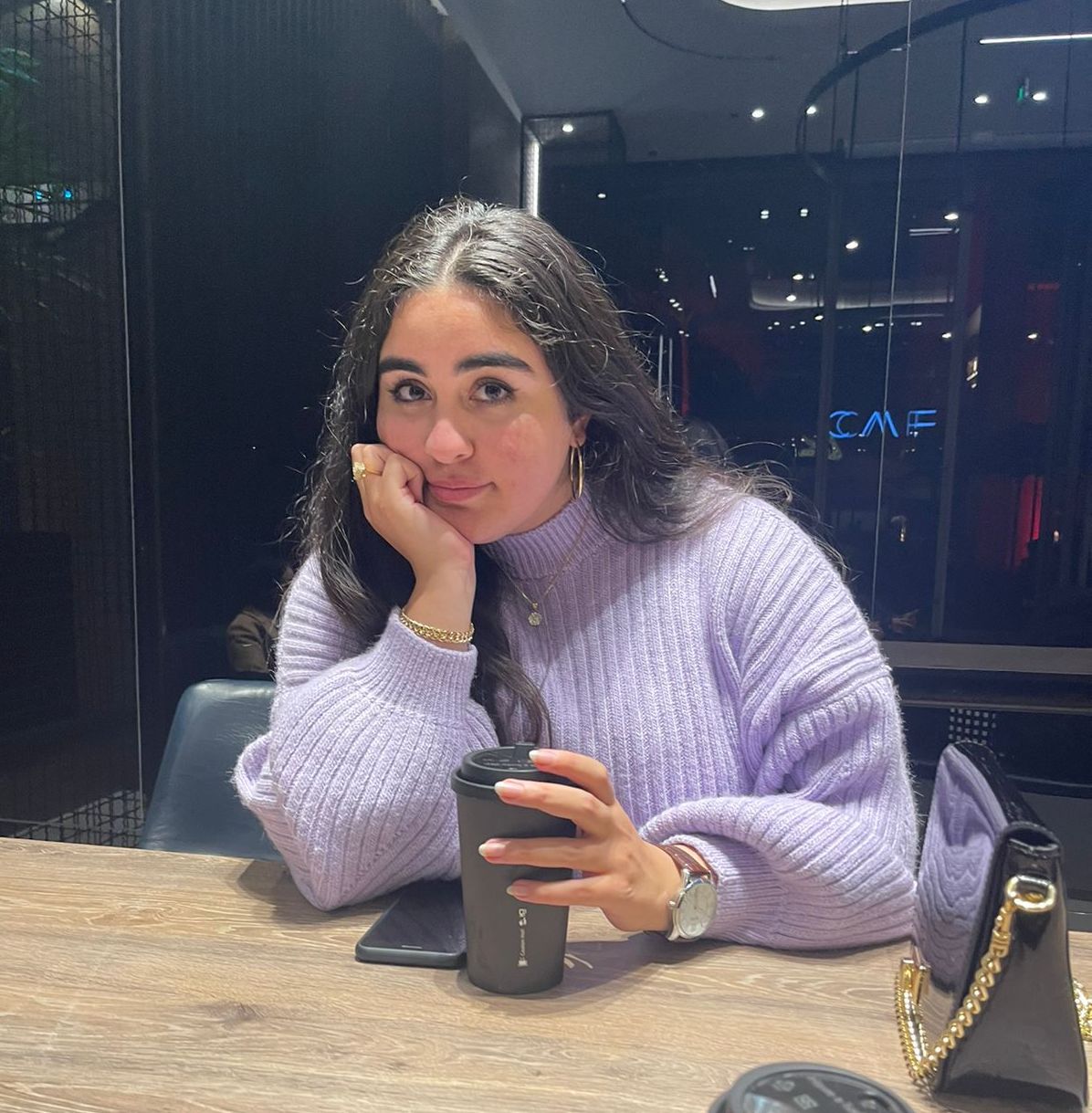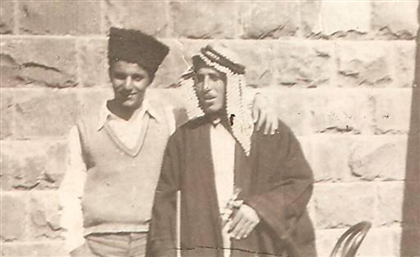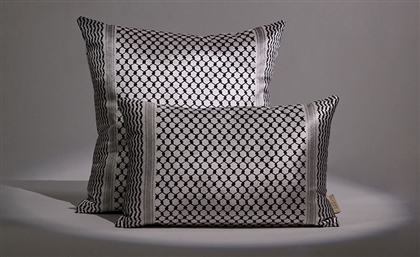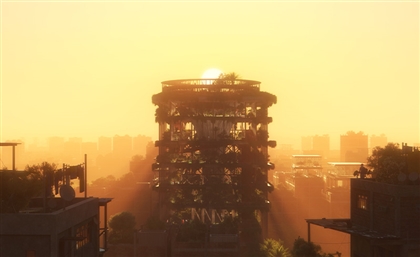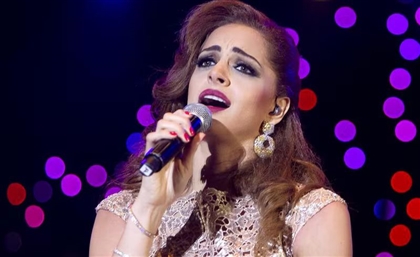Mapping Palestinian Resistance Through the Keffiyeh
“We are making the symbol of Palestine." - Yasser Hirbawi.
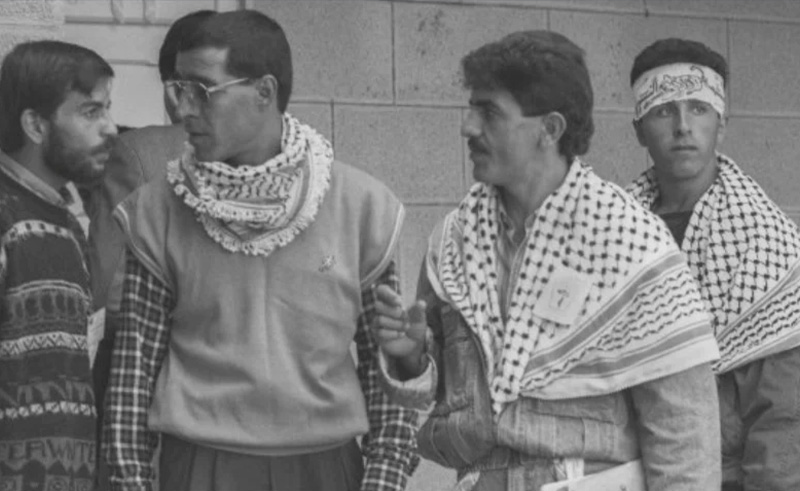
The Palestinian keffiyeh, an iconic black and white patterned scarf, carries within its fibres a profound history and immense significance that stretches far beyond its physical form. Rooted in the ancient traditions of the region, the keffiyeh has evolved to become a symbol of Palestinian heritage, a powerful emblem of solidarity, and a testament to the resilience of a people refusing to bow to their occupiers.
In the words of Palestinian poet, Suheir Hammad:
now i am the daughter
coughing up the olive branch
the son rebuilding a nation
the father rebuilding himself
i am the mother
stitching our stories into kafiyes stitched into our land
of tears and blood
with years and love
i stitch the story
phalasteen
into a kafiye
never to unravel
-ecc211ba-b275-4eba-91ce-653815eaca2d.jpg) The origin of the garment itself dates back to the Sumerian priests of Mesopotamia in 3100 BCE, where a version of the keffiyeh was worn to distinguish honour and rank in society. The actual word ‘keffiyeh’ is a variation of the word ‘Kufa’, an area of Iraq, and means ‘from the city of Kufa.’
The origin of the garment itself dates back to the Sumerian priests of Mesopotamia in 3100 BCE, where a version of the keffiyeh was worn to distinguish honour and rank in society. The actual word ‘keffiyeh’ is a variation of the word ‘Kufa’, an area of Iraq, and means ‘from the city of Kufa.’
However, the Palestinian keffiyeh in specific can be traced back to the country’s Bedouin communities and local farmers, where it was initially used as a practical garment to protect against the harsh desert environment. Woven from lightweight cotton, the keffiyeh's chequered pattern emerged as a distinctive feature that reflected the cultural identity of the region. As time passed, it became an integral part of Palestinian dress, signifying a deep connection to the land and a proud expression of heritage.
Historically, bedouins adorned themselves with a red and black keffiyeh. The red hue represented the vast expanse of the desert, evoking a connection to the arid landscapes that have shaped the lives of those dwelling in these regions. Symbolically, the black woven into the keffiyeh's pattern represented the night sky, signifying the mysteries and timeless beauty of the cosmos.
-ec01658a-f509-430d-802c-5f70ffce75eb.jpg) With the passage of time, each region eventually adopted its own pattern and colours to the keffiyeh, weaving their own national motifs into the fabric.
With the passage of time, each region eventually adopted its own pattern and colours to the keffiyeh, weaving their own national motifs into the fabric.
“Some people assume that the shape of the embroidery represents the fishing net, which in turn signifies cohesion between individuals, while the lines on the other side characterise the olive leaf – a symbol of Palestinian authenticity. For Palestinians, the olive tree is a matter of life and death – it is their treasure – so this interpretation may be correct," explained Dr. Yahya Zakaria Al-Agha, Ambassador for Cultural and Educational Affairs at the Palestinian Embassy in Qatar, and Vice-Chairman of the Palestinian Schools Board, during the 2021 Palestine Cultural Week at the Qatar National Library.
It wasn’t until the British Mandate and the following Arab revolt in the 1930s that the keffiyeh’s significance transcended its role as a culture-specific article of clothing. During the British Mandate of Palestine, particularly during the 1936-1939 Arab Revolt, Palestinian rebels and revolutionaries wrapped the keffiyeh around their faces to hide their identity and avoid arrest. The British authorities decided to ban the keffiyeh, and in a nationwide act of resistance, all Palestinians started wearing the keffiyeh, making it nearly impossible for the authorities to identify the rebels.
Ramzy Baroud, a Palestinian journalist and author, captured those moments in his novel, The Last Earth: A Palestinian Story, through the lens of his protagonist, “one morning Joe folded his most trusty placard, put on his favourite kufiyah, and took the subway to Manhattan to join an anti-war protest called by the Palestinian community in New York. As he reached his destination, he found himself in a whole different world of activism. It was an entire community wearing kufiyahs and flooding the streets of New York City in a sea of emotions, an abundance of tears, and a single chant that was so focused and penetrating that it left the young Hopewell activist in reverence. “Free Free Palestine,” “Free Free Palestine,” they all cried, delineating over and over again this overriding priority of a mobilised community.”
The keffiyeh officially started representing Palestine to the rest of the world in the 1960s, when former President of Palestine, Yasser Arafat, wore one at every public appearance. He didn’t just merely wear it, but wrapped around his head, its tail end laid out on his right shoulder, resembling a map of Palestine pre-Nakba.
-ee179dcb-c522-4ebc-adab-8dda23416396.jpg) In 1961, Palestinian entrepreneur, Yasser Hirbawi, founded the Hibrawi Textile Factory in Al Khalil, the first ever factory dedicated to the production of keffiyehs. Each keffiyeh is handmade using a unique cross-stitching technique developed over decades. Today, only a handful of people still know these techniques that have been honed through generations. “We are making the symbol of Palestine," Hirbawi told The Guardian in 2008. “This scarf is the history and the heritage of our country."
In 1961, Palestinian entrepreneur, Yasser Hirbawi, founded the Hibrawi Textile Factory in Al Khalil, the first ever factory dedicated to the production of keffiyehs. Each keffiyeh is handmade using a unique cross-stitching technique developed over decades. Today, only a handful of people still know these techniques that have been honed through generations. “We are making the symbol of Palestine," Hirbawi told The Guardian in 2008. “This scarf is the history and the heritage of our country."
During the 1970s, the keffiyeh was adopted by revolutionary freedom fighter and member of the Popular Front for the Liberation of Palestine (PFLP), Leila Khaled, who wore it as a headscarf, encouraging Palestinian women to wear it as an act of solidarity with her. Effectively normalising the keffiyeh enough for it to be worn by everyone – man, woman and child – in a unique expression of unity.
This sentiment eventually transcended the borders of Palestine during the First Intifada in 1987 and again in the Second Intifada in 2000. The keffiyeh was worn in Jordan, Egypt, Lebanon, Syria, Iraq, Tunisia, Algeria, Morocco and Yemen in solidarity with the Palestinian resistance against Israeli occupation.
Which, with the beginning of the digital and late capitalist age, meant that keffiyeh reached the wider world, and was subject to mass cultural appropriation, being cheaply mass-produced by Chinese factories and sold as trinkets in the West. In response, British-Palestinian rapper, Shadia Mansour, released her then-hit track ‘El Koffeyye Arabeyye’:
Now these dogs are starting to wear it as a trend
No matter how they design it, no matter how they change its colour
The keffiyeh is Arab, and it will stay Arab
The scarf, they want it
Our intellect, they want it
Our dignity, they want it
Everything that’s ours, they want it
We won’t be silent, we won’t allow it
It suits them to steal something that ain’t theirs and claim that it is
-5658d6c8-4ccb-48c0-99f2-c1ca05feec54.jpg) In a traditional Palestinian thobe and keffiyeh, Mansour stood on a stage in New York and ahead of performing the track, said, “You can take my falafel and hummus, but don’t fucking touch my keffiyeh.”
In a traditional Palestinian thobe and keffiyeh, Mansour stood on a stage in New York and ahead of performing the track, said, “You can take my falafel and hummus, but don’t fucking touch my keffiyeh.”
In a 2011 interview with The Rolling Stone, Iraqi-Canadian rapper, Yassin Alsalman, more commonly known as Narcy, said, “The keffiyeh represents struggle now more than ever before. At first it represented nationalism, but for our generation, it represents the oneness of nations.”
-8affe0cd-21dd-4979-8c97-8e8e150e0a4e.jpg) Today, the keffiyeh is a powerful visual statement, representing the ongoing struggle for justice, freedom, and self-determination of the Palestinian people. Worn by Palestinians and supporters worldwide, the keffiyeh stands as a tangible expression of unity and resistance against oppression. While the keffiyeh's patterns may have evolved and been embraced in fashion, its core meaning remains firmly rooted in preserving cultural heritage, raising awareness, and fostering a sense of collective identity among Palestinians and their allies.
Today, the keffiyeh is a powerful visual statement, representing the ongoing struggle for justice, freedom, and self-determination of the Palestinian people. Worn by Palestinians and supporters worldwide, the keffiyeh stands as a tangible expression of unity and resistance against oppression. While the keffiyeh's patterns may have evolved and been embraced in fashion, its core meaning remains firmly rooted in preserving cultural heritage, raising awareness, and fostering a sense of collective identity among Palestinians and their allies.
“The keffiyeh remains a symbol of sovereignty, identity, existence, and revolution. It is the unifying language of the Palestinian people, at home and abroad, and a symbol of revolution and struggle,” Dr. Al-Agha said.
- Previous Article سندباد الورد أضحي سلطاناً: مراجعة لألبوم شب جديد والناظر 'سلطان'
- Next Article Egyptian Embassies Around the World
Related Articles
Trending This Week
Events Calendar







